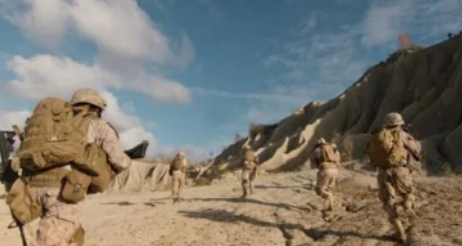The 2003 Iraq War: A Timeline of Events and Aftermath”

On March 19, 2003, the United States, Iraq War alongside coalition forces primarily led by the United Kingdom, commenced military operations in Iraq. The decision was announced by U.S. President George W. Bush in a televised address, citing the objective to disarm Iraq, liberate its people, and safeguard global security.
READ: Navigating Amsterdam’s Waterways: A Canal Cruise Experience
Iraq War
The justification for war centered on the belief, later found to be erroneous, that Iraq, under the rule of dictator Saddam Hussein, possessed or was actively developing weapons of mass destruction.
The onset of hostilities occurred shortly after the expiration of a U.S.-imposed deadline for Saddam Hussein to vacate Iraq or face military action. The initial targets, deemed of military significance, were struck by Tomahawk cruise missiles launched from U.S. fighter-bombers and warships stationed in the Persian Gulf. In response, Iraqi authorities denounced the aggression through Republic of Iraq radio broadcasts.
Despite Saddam Hussein’s defiant rhetoric prior to the invasion, he retreated into hiding following the American-led incursion, communicating with his followers solely through sporadic audiotapes. Within a remarkably brief period of three weeks, coalition forces overthrew his regime and gained control over major Iraqi cities, encountering minimal opposition.
President Bush declared an end to major combat operations on May 1, 2003. However, this did not mark the cessation of conflict in Iraq, as an insurgency emerged, perpetuating a protracted guerrilla war that resulted in significant casualties among coalition forces, insurgents, and civilians.
After an extensive manhunt, Saddam Hussein was apprehended by U.S. soldiers in December 2003, found concealed in a makeshift hideout near Tikrit. Subsequently, he faced trial for numerous crimes against humanity, including orchestrating mass killings.
In June 2004, authority transitioned from the provisional government to the Iraqi Interim Government, paving the way for democratic elections. The Iraqi people elected a National Assembly in January 2005, leading to the ratification of a new constitution later that year.
Saddam Hussein was convicted of crimes against humanity in November 2006 and subsequently sentenced to death. He was executed by hanging on December 30, 2006, following an unsuccessful appeal process.
The aftermath of the Iraq War witnessed ongoing instability and sectarian strife, underscoring the complex and enduring challenges faced by the nation in its quest for stability and democracy.




